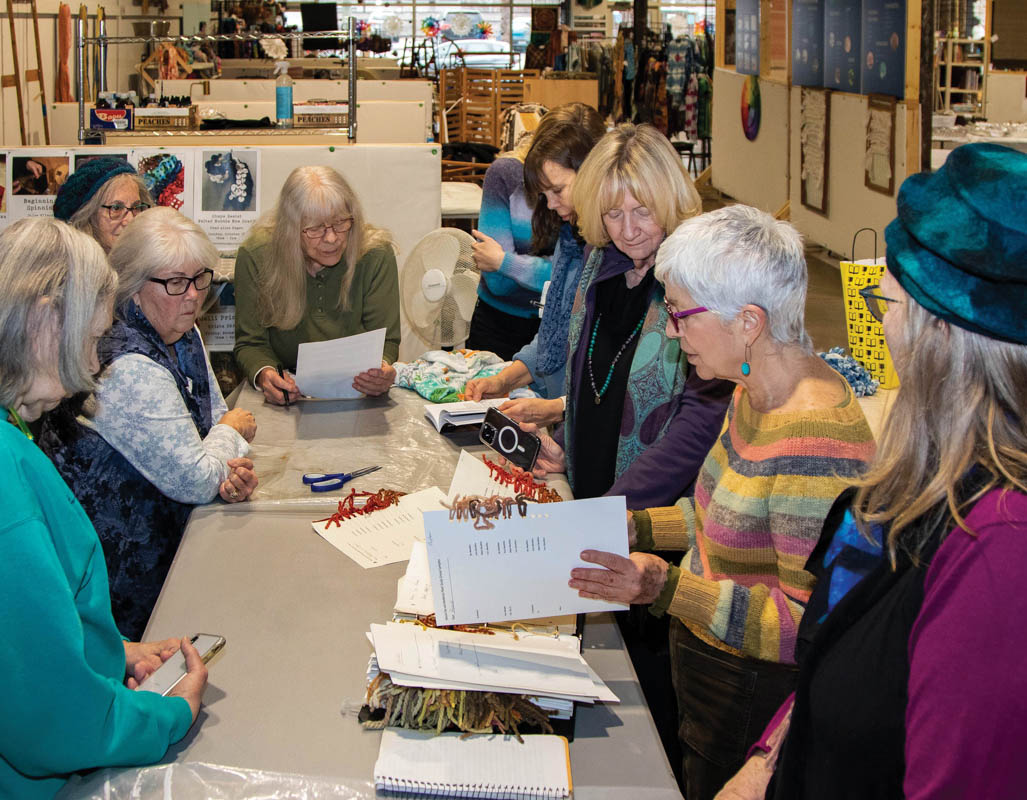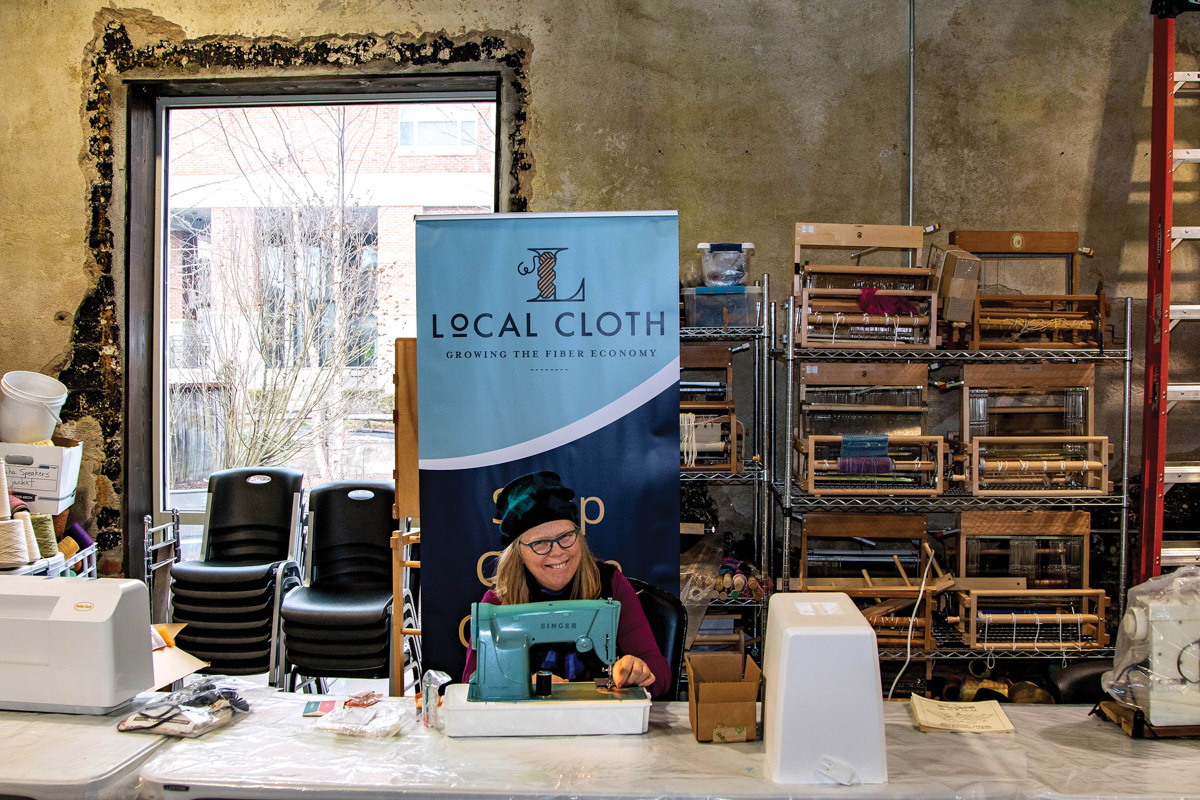
Lynne Noble agrees that Lobaria pulmonaria (aka tree lungwort) is a tad homely. A species of lichen usually found in humid old-growth forests, this fungus looks like a cross between seaweed and a dry, leathery toad.
“It’s bumpy and weird,” admits Noble, a cheery-eyed woman with ruddy cheeks. But, she promises, if you boil the scaly substance in a big pot for an hour or two, a magical alchemy occurs. As it simmers, the lichen releases a vivid pigment that can be used to dye silk, wool, cotton, and other materials.
“The color is a very pretty, rusty orange,” says Noble, who is a member of the Natural Dye Interest Group at Local Cloth.
Each month, Noble joins a handful of other fiber fiends at the gathering space on Depot Street. Together, they experiment with botanicals like murasaki, madder, and weld. One afternoon, artist Denise Arcuri led the group in using clay as a resist for indigo dyeing. Another afternoon, they all toyed with cochineal, a tiny parasitic insect that thrives on cacti. When dried, the critters reveal a pinkish-red hue.

Dyeing fabric with mud and bugs may seem a little archaic. But for many members of the Natural Dye group, learning how to stain linen with walnuts or hemp with logwood is actually a progressive endeavor: a sustainable alternative to using man-made coloring agents. According to fiber artist Joyce Tromba, these petrochemical-based dyes are a major environmental pollutant.
“Plus,” says Tromba, “having a connection with something that was living — perhaps something you grew in your garden — affords a much deeper appreciation of the color.”
She should know. Before studying at Penland School of Craft and deciding to settle in Asheville, Tromba spent 35 years teaching overseas. “But I always had my hands in something fiber-related,” she says. While living in Africa, for instance, she took a class on indigo dyeing. Then, while living in Bangladesh, she learned the tradition of block printing.
Today, Tromba serves as a board member and instructor at Local Cloth, a nonprofit that works to nurture Western North Carolina’s fiber economy. Though launched in 2012, the organization truly came into its own in April 2021, when operations shifted from a tight 900-square-foot space on Coxe Avenue to a sprawling studio in the River Arts District.
“That was a great move for us,” says Tromba. “We now have a very big classroom, a retail space, and even a dye kitchen.”

The venue’s dye kitchen shows the beauty of slow craft at every step. Photos by Clay Nations Photography
More elbow room means more space for community classes, with topics ranging from sandalmaking to turning a $1 notebook into a felted journal. “We have workshops that cover the whole fiber continuum: weaving, spinning, sewing, bookmaking, papermaking,” Tromba says, rattling off a hearty list of offerings.
With obliging names like “Easy Peasy Wool and Silk Dyeing,” most of these classes are aimed at fledgling fiber artists who want to master the basics. For more experienced folks, Local Cloth hosts Interest Groups. These intimate gatherings center around topics like darning and hand spinning, and are “more relaxed and collaborative” in nature, says Tromba.
Meetings for the Natural Dye Interest Group also tend to be wildly exploratory. The January session, for instance, was less like your grandmother’s knitting club and more like a high-school chemistry class. As the tree lungwort bubbled in a cauldron, attendees took turns tossing in hanks of wool and tidbits of cotton, hypothesizing about the results.
“It’s all about chemistry,” Tromba says, offering a quick crash course in dyeing. The science lesson gets confusing pretty quickly. However, the main takeaway is that animal protein fibers like wool and silk react differently to botanicals than cellulose fibers like cotton, linen, and hemp. As a result, no piece of fabric dipped in a vat of Lobaria pulmonaria stew is going to look the same.
In that way, natural dyeing can be a little maddening, especially if you want your tunic to be a specific shade of umber or sage. To control some of this chaos, Tromba keeps careful notes in a “huge, overflowing three-ring binder.” Alongside mordanted fabric samples, she scribbles descriptions of the respective dye solutions, techniques, and other factors that may have influenced the color.
Still, nothing is entirely precise or exact. And that’s the beauty of it, says Noble.
“We’re an experimental group,” she confirms. “We come in here each month and we just try things.”
Local Cloth (408 Depot St. Suite 100, Asheville) will host its next Natural Dye Interest Group on Sunday, March 26, 1-4pm. $5 for members, $8 for non-members. See more at localcloth.org or call 828-774-5134.